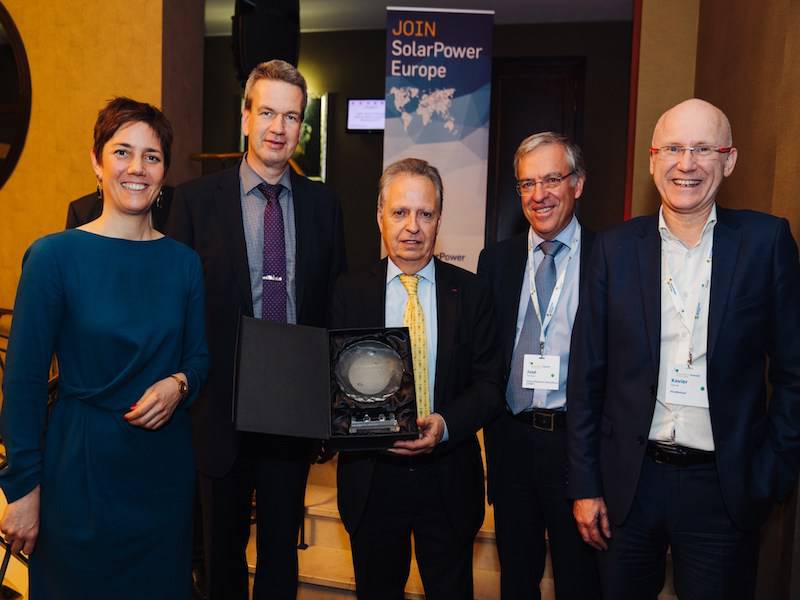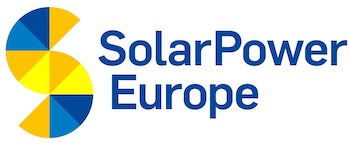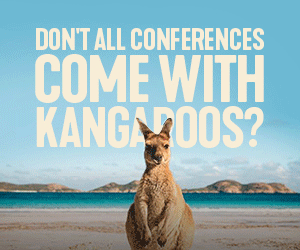Association Profile: The Future is Solar

SolarPower Europe leads the energy transition into solar, the world’s fastest growing power generation source. How can we associations do our part in sustainability? Find out more from Deputy CEO and Chief Operating Officer Bruce Douglas, whose personal ambition is to accelerate the energy transition towards 100% renewable energy.
HQ: How can we enable personal behavioural change?
 Bruce Douglas: Awareness is the biggest factor. Often, we are unsure of how our choices translate into effects on the environment and climate. For example, according to UN’s Food & Agriculture Organisation, 18% of global greenhouse gases are produced by the livestock industry, equating to the CO2 emissions produced by driving almost 110km in a car, a figure which many people may not take into consideration when making food choices. With more knowledge and information about how our choices are influencing the climate, people can make more informed choices.
Bruce Douglas: Awareness is the biggest factor. Often, we are unsure of how our choices translate into effects on the environment and climate. For example, according to UN’s Food & Agriculture Organisation, 18% of global greenhouse gases are produced by the livestock industry, equating to the CO2 emissions produced by driving almost 110km in a car, a figure which many people may not take into consideration when making food choices. With more knowledge and information about how our choices are influencing the climate, people can make more informed choices.
We can begin by making small, everyday changes, such as diet. This could be choosing to buy food which was locally and sustainably produced or reserving 1-2 days per week for vegetarian or vegan meals, which can make a huge difference to our CO2 emissions.
What are the fundamental commitments of a ‘green organisation’?
BD: A ‘green organisation’ is essentially committed to being as carbon neutral and sustainable as possible. This can be done through sourcing energy from renewable power sources, holding events and conferences in locations powered by sustainable energy, encouraging people to consider vegetarian and vegan food options, offsetting CO2 emissions produced by travelling, effectively recycling by correctly sorting all waste and garbage, and reducing the amount of waste produced day-to-day by opting for more sustainable products, such as reusable water bottles instead of plastic bottles, or reusable coffee cups instead of paper or plastic cups.
A ‘green organisation’ should lead by its own example and should encourage others to follow their example, such as clients, partners, and other co-workers.
How can we achieve better sustainability within the association sector and sourcing of cost-effective renewable energy?
The UN Sustainable Development Goals are a very good benchmark for what we can all do to be more sustainable and combat climate change. The targets are very accessible and can show people what they can do in their day-to-day lives to contribute to the positive change.
Goal 7, for instance, outlines targets for Affordable and Clean Energy. According to the UN, energy is the dominant contributor to climate change, and it accounts for approximately 60% of total global greenhouse gas emissions. Instead of relying on coal, oil and other fossil fuels, we need to incorporate more and more renewables into our homes and businesses.
In addition, Goal 11 outlines targets for Sustainable Cities and Communities. All cities in the world occupy only 3% of land on Earth, but account for 60-80% of energy consumption and 75% of carbon emissions. Currently, 3.5 billion people live in cities today, with 5 billion people projected to live in cities by 2030. We need to make our associations, homes, and businesses green and sustainable in order to drastically reduce our CO2 emissions and cities’ contributions to climate change, and to improve health levels in our cities when you consider the effects polluting power sources have on air quality.
As you’ve shared at EAS the five key aspects such as waste management, resources used, travel, procurement, and engage and review. Let’s hone in on one of them: What can associations and the meetings industry do when it comes to travelling?
When it comes to travelling, people should be informed and made more aware of alternative modes of transport, which are easily accessible and user-friendly. We use modes of transport that we are familiar with, often without considering how much one trip contributes to CO2 emissions level, but there are quite a lot of green transport alternatives that are very affordable, flexible, and can even reduce travel time.
One way to do this is in the organisation of events; it should be made clear on the event website and on advertising / mailings sent to participants, the various ways one can get to the event venue by using public transport, public bicycles, etc.
Associations should, where possible, choose to travel by train instead of by airplane. In cases where people travel by car, they should decide to carpool rather than bringing individual cars.
However, people can also look into avoiding travelling and instead consider virtual meetings using technology such as GoToMeeting, GoToWebinar and Skype. This not only saves time and money, but also lowers contributions to the CO2 footprint.
Can you share some key take-aways from the SolarPower Summit (that took place at the Marriott Hotel Grand Place in Brussels on 6-7 March)?
SolarPower Summit 2019 showed that Europe is back in solar business, as solar installations in EU-28 grew by 8 GW in 2018, which is a 36% increase year-on-year. More than 300 participants attended, including policymakers, high-level speakers, and representatives from various companies and associations across the whole solar value chain. With engaging discussions and presentations on all solar topics from corporate sourcing to solar mobility to emerging markets and much more, the SolarPower Summit showed that the enthusiasm and initiative is there for the uptake of more solar in Europe in order to reach the EU 2030 and 2050 climate goals.
For more information, please visit www.solarpowereurope.org
Photo Credit: Main Picture, Fiona Castiñeira

Other Articles
About Us
Supported by the Union of International Associations (UIA), the International Association of Professional Congress Organisers (IAPCO) and the Interel Group, the global public affairs and association management consultancy, Headquarters Magazines serve the needs of international associations organising worldwide congresses.















